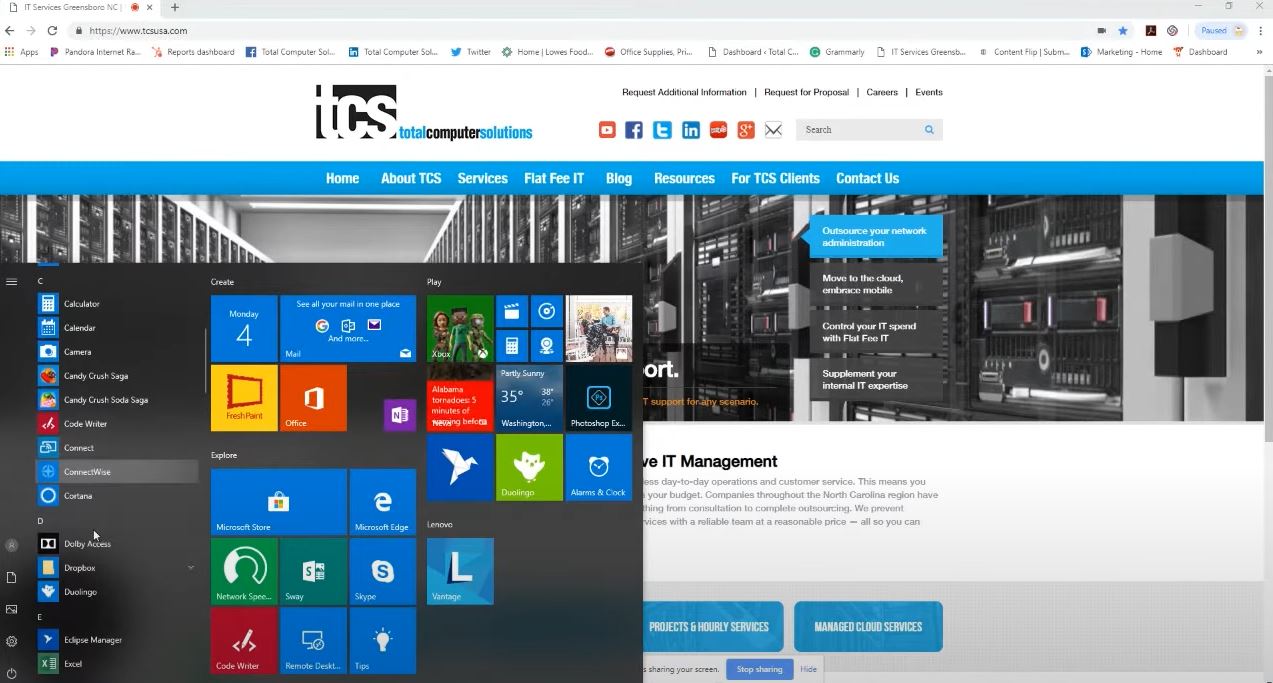Are you tired of overspending on your Office 365 licensing? Do you feel you’re not getting the most out of your investment? Well, fear not! This article will show you how to save money and optimize your Office 365 licensing. By following these tips and strategies, you can ensure that you are only paying for what you need while maximizing the benefits of this powerful productivity suite.
The Cost of Office 365 Licensing

Office 365 is undoubtedly an essential tool for businesses of all sizes. Its features and applications enable collaboration, productivity, and communication. However, without proper management, the cost of Office 365 licensing can quickly add up, leading to unnecessary expenses for your business.
Below, we explore several strategies to help you save money while optimizing your Office 365 licensing. From educating your employees about Office 365 to managing licensing processes efficiently, we’ll provide practical tips that will significantly impact your bottom line.
Educate Your Employees About Office 365

One of the most effective ways to optimize your Office 365 licensing is by ensuring your employees are well-versed in its features and capabilities. When they understand how to make the most of Office 365, they can utilize it effectively, increasing their productivity and reducing the need for additional licenses.
Make the Most of Office 365 Features
Office 365 offers powerful tools and applications beyond Word, Excel, and PowerPoint. By educating your employees about these features, you empower them to leverage the full potential of the suite. Encourage them to explore apps like Teams for seamless communication, SharePoint for document collaboration, and OneNote for note-taking and organization.
Provide Training and Resources
Investing in training and resources for your employees can go a long way in optimizing your Office 365 licensing. Consider hosting workshops or webinars to teach them how to use different applications effectively. Additionally, provide access to online tutorials, user guides, and support channels so they can continue learning at their own pace.
Encourage Adoption and Collaboration
Driving the adoption of Office 365 across your organization fosters collaboration and boosts productivity. Create a culture encouraging employees to use Office 365 tools for daily tasks and projects. Emphasize the benefits of working together in real-time, accessing files from anywhere, and streamlining workflows with shared calendars and tasks.
Buy Licenses Specific to Every Employee’s Role and Responsibilities

Investing in Office 365 licenses that align with your employee’s roles and responsibilities is crucial for cost optimization. Choosing the right license plans ensures employees can access the features they need without paying for unnecessary extras.
Assess Your Team’s Needs
Begin by conducting a thorough assessment of your team’s requirements. Identify the specific applications and functionalities that are essential for each role. For example, a salesperson might require Outlook, Excel, and PowerPoint, while an IT professional may need SharePoint and OneDrive for Business.
Choose the Right License Plans
Once you understand your team’s needs, select the appropriate license plans from the variety offered by Office 365. Microsoft provides different options like Office 365 Business Essentials, Office 365 Business Premium, and Office 365 E3. Each plan provides various combinations of applications and services, allowing you to tailor licenses to individual roles effectively.
Customize Licenses Based on Roles and Responsibilities
Take advantage of Office 365’s flexibility to customize licenses based on roles and responsibilities. With Office 365’s user management tools, you can assign licenses to individuals or groups easily. This way, you can avoid purchasing licenses for features that certain employees may not use, optimizing costs while maximizing productivity.
Manage Licensing Process for Employees’ Departure

When employees leave your organization, efficiently managing their licensing process is crucial to prevent unnecessary costs and safeguard sensitive data. Implementing effective offboarding procedures will help minimize any financial implications associated with unused licenses.
Deactivate and Reassign Licenses
Upon an employee’s departure, promptly deactivate their Office 365 license. This revocation ensures that you don’t continue to incur charges for a user who no longer requires access. Additionally, consider reassigning the deactivated license to another employee who can benefit from it, thus optimizing usage and minimizing expenses.
Safeguard Sensitive Data
Before removing an employee’s access to Office 365, safeguard any sensitive data they may have stored within their accounts. Back up important files and ensure proper permissions are set up to prevent unauthorized access. Doing so can protect your company’s information while maintaining compliance with security regulations.
Psst! You can help protect your data easier than ever with TCS’s flat-fee managed IT services.
Minimize Costs with Efficient Offboarding
Streamline the offboarding process to minimize costs associated with managing licenses for departing employees. Establish a procedure that includes notifying IT administrators about upcoming departures, promptly deactivating licenses, and documenting license reallocation for internal auditing purposes. With efficient offboarding protocols, you can avoid unnecessary licensing expenses and maintain tight control over your Office 365 environment.
Create a License Recovery and Cleanup Policy

2024 year futuristic new neon symbol and man typing computer keyboard. Hands on laptop. Network, cyber technology and background abstract concept illustration.
Regularly reviewing your user licenses and reclaiming unused or underutilized licenses is essential to optimizing your Office 365 licensing. By implementing a license recovery and cleanup policy, you can identify areas where licenses are being wasted and reallocate them to those who need them most.
Regularly Review User Licenses
Periodically review your user licenses to ensure they align with your employees’ current roles and responsibilities. Conduct audits to identify any discrepancies or instances of unused or duplicated licenses. This regular evaluation will help you stay on top of your licensing needs and make necessary adjustments.
Reclaim Unused or Underutilized Licenses
Identify users who haven’t logged into Office 365 for an extended period or individuals whose usage falls significantly below average. These may be indications of underutilized licenses. Reclaim these licenses and reassign them to employees who require additional features or applications. This way, you can optimize your licensing costs by ensuring that every license is put to good use.
Streamline License Management Processes
Simplify and streamline your license management processes to avoid manual errors and reduce administrative overheads. Take advantage of automation tools and user management features within Office 365 to centralize license monitoring, reporting, and allocation. Doing so can minimize the risk of unnecessary costs due to oversight or mismanagement.
Organize Your Company Microsoft Office 365 Users and Permissions

Maintaining a well-organized structure for your company’s Microsoft Office 365 users and permissions is essential for efficient licensing management. A clear hierarchy will help optimize your licensing and improve security and compliance within your organization.
Establish a Clear User Structure
Establishing a logical user structure within Office 365 provides better visibility and control over licensing. Group employees based on their departments, teams, or roles to simplify license assignment and management. This way, when changes occur in your organization, such as transfers or promotions, it becomes easier to update licenses accordingly.
Set Appropriate Access Levels
Control access to specific applications or services by setting appropriate access levels for different user groups. Assign licenses with limited capabilities to those who don’t require advanced functionalities. Customizing access rights ensures that each employee has access to what they need while preventing unauthorized usage, reducing licensing costs.
Improve Security and Compliance
You enhance security and compliance measures by organizing your company’s Office 365 users and permissions effectively. Ensure that sensitive data and confidential information are accessible only to authorized individuals. This proactive management minimizes the risk of data breaches and non-compliance issues, saving your organization from potential legal and financial consequences.
Unlock the Full Potential of Office 365 Licensing

Close-up of Technical Engineer Working on His Computer With Multiple Displays in Monitoring Room. In the Background His Colleagues with Graphics and Various Data on Their Monitors.
In conclusion, optimizing your Office 365 licensing helps save money and enhances productivity and collaboration within your organization. By educating your employees about Office 365, tailoring licenses to individual needs, efficiently managing departures, implementing a license recovery policy, and organizing users and permissions, you unlock the full potential of this powerful productivity suite.
Now, it’s time to take action! Evaluate your current Office 365 licensing, and if you’re not sure how best to implement the strategies outlined in this article, contact TCS today. By doing so, you’ll be well on your way to saving money, maximizing the value of your investment, and creating a more productive and efficient work environment for your team.




